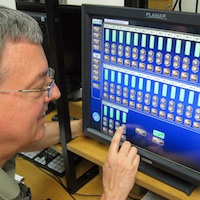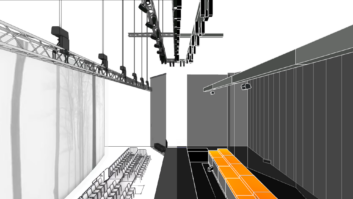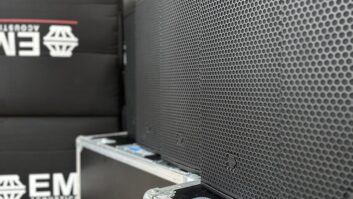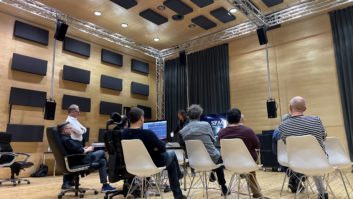
New audio systems based around Lectrosonics ASPEN digital processors has improved audio quality and speech intelligibility at the Arizona State Legislature – home to the state Senate and House of Representatives.
Phoenix, Arizona-based integrator Intent Digital was contracted to handle the facility upgrade. “The two ASPEN systems – one each for the Senate and House of Representatives – are interfaced with our firm’s Energize Control System,” stated Bob Ginger (pictured), technology partner with Intent Digital.
In the Senate, the team deployed a single Lectrosonics ASPEN SPNConference unit interfaced with three ASPEN SPN2412 processors. This system is configured as a 72 x 36 matrix. Additional equipment includes 52 Shure gooseneck microphones, 50 Tannoy CMS501 loudspeakers, one JBL CBT50LA constant beam-width loudspeaker, two Crown CT875 eight-channel amplifiers, and a Crown XFMR4 transformer panel.
For the House of Representatives, another SPNConference unit is interfaced with five more ASPEN SPN2412 processors. This system is configured as a 120 x 60 matrix. There are also 112 Shure gooseneck mics, 55 Tannoy CMS501, 12 Tannoy Di5 loudspeakers, four Crown CT875 amplifiers, plus a Crown XFMR4 transformer panel.
The systems handle all audio for the various public committee hearings and voting sessions. Said Ginger: “The Senate has four hearing rooms while the House has five. Both Aspen systems are controlled as one system via the Intent Digital Energize control system 19in touchpanel, which is located at the Arizona Capitol Television Master Control. Furthermore, there are Energize single gang touch panels in the Senate hearing rooms for basic room audio control. The Aspen system handles mixing of wired and wireless microphones in all rooms, as well as telephone conferencing, mix minus, press feeds, assisted listening feeds, recording and broadcast feeds, and room combining functions.”
He continued: “The ASPEN system is tailor made for this type of application as its architecture is optimised for matrix mixing, equalisation, feedback elimination, and auto-gain without having to program a DSP project. Having 48 mix busses available to create a multitude of program and mix minus feeds that can be sent to any combination of outputs at differing operating levels is a very powerful aspect of the ASPEN processors. The Energize control system operates seamlessly with the ASPEN processors to create any project configuration.The ASPEN system can store the base default operating settings and Energize keeps track of the dynamically changing parameters. Therefore, if the system has to be restarted, Energize will set all the ASPEN levels to the last good setting.”
Ginger commented that it’s easy for Intent’s engineering team to create mixer configuration notes for technicians to use to configure the ASPEN units quickly: “We don’t have to go through the DSP programming effort to create a project. Energize easily communicates with the ASPEN systems over either a serial connection (RS-232) or Ethernet. We created live mixer touchpanel control pages for each room, some of which have as many as 32 microphones. The pages also contain output controls for room speakers, broadcast, recording, and assisted listening feeds. We are using quite a bit of mix-minus capability for speakers over the meeting participants heads, which is working very nicely for consistent sounding audio throughout the various rooms. The powerful Energize control system does not require any software coding or compiling. Instead, it contains an impressive set of point and click tools to quickly select how source, output, mix bus, or crosspoint gains or mutes are to be controlled. This makes it very easy to gang any combination of audio mixes to an Energize control object.
“With that said, I’ll summarise the project this way – the audio sounds fantastic, rich and full, without feedback.”







